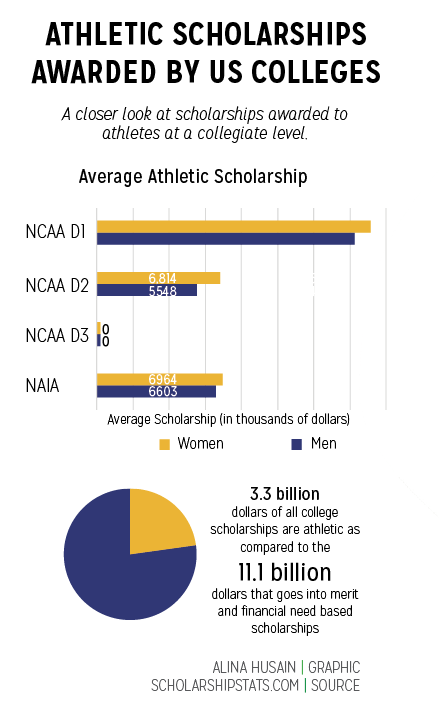SHOW ME THE MONEY: We hear about athletic scholarships all the time, but how much are they actually worth?
When Kevin Stone, varsity men’s golf team member and senior, decided which college he would commit to, one factor he considered was scholarship money.
“I was first offered a scholarship in the summer of 2015. The first was from Ball State University, and then (the offers) really started to pick up in the fall of 2015. I was looking at more schools down south and in the west when Ohio State started looking at me. Once I started visiting Ohio State, talking to coaches and saw the offer, I knew that was where I wanted to go,” Stone said.
According to the NCAA, roughly 2 percent of high school athletes are awarded athletic scholarships. To the NCAA , a college education is the most rewarding benefit of the athletic experience.
Harvard University commit Charles Vaughan, varsity men’s swimming and diving team member and senior, said, “For me, money wasn’t huge in my decision. I’m fortunate that I’m an only child, and, obviously, we are from Carmel. It was hard to get over receiving no athletic scholarship because you work so hard. You want some monetary value for your work, but you have to realize it’s an Ivy League education.”
Stone took into consideration what costs were being covered, but it was the program at Ohio State that had the greatest effect on his decision.
“Money wasn’t the main consideration for me. I wanted a program with a great golf team, one that can contend. Also, I want to be able to pursue what I want to be when I get older first and then be part of a team that I want to be part of,” he said.
Stone is covering a large part of his tuition with his athletic scholarship, but he is also looking to receive academic money.
“There is a big merit-based scholarship for out-of-state kids at Ohio State. It covers 20 percent of the tuition cost, and I’m really aiming for it,” he said.
While Stone expects both athletic and academic money, he understands that he may not be able to receive all the money from both scholarships. Assistant Athletics Director Bruce Wolf explained, “ You can’t be an athlete in Division I or II and receive more money than the actual cost of attendance. You can’t get a 75 percent athletic scholarship and a 50 percent merit scholarship because essentially they’re paying you more money than it costs to go to school. However, it’s not unusual for compensation packages and scholarship packages to be put together.”
Although an athlete cannot receive more than the actual cost of attendance as an offer, the amount he or she receives can be increased or decreased.
Wolf said scholarships aren’t permanent until the National Letter of Intent is signed, and they could also increase or decrease after one’s freshman year in college.
He said, “Until you actually sign scholarship papers, the amount of scholarships can fluctuate. Scholarships are honored by year. So, if you go to school on a 50 percent scholarship but you do really well, the school can increase next year’s scholarship if they choose to.”
Scholarships can play a part in school selection for seniors all over the country, and student athletes are no exceptions. Yet, for Stone and Vaughan, it was not their biggest concern.
As Stone said, “Ohio State is the program that best fit what I wanted. Sure, other schools gave me big offers, but money wasn’t my biggest concern. Ohio State has a great team. They gave me a good package, and I’m looking forward to getting to Columbus.”


